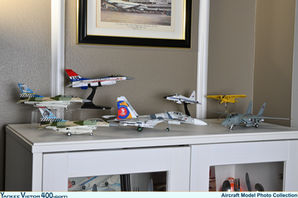Up Close and Personal with 3D Printed GSE by West Coast Diecast
- Jorge A. Zajia

- Jul 15, 2023
- 2 min read
The 3D printing technology finally got a hold of me. Even though I had been aware of the implementation of 3D printing on 1:400 scale, I never gave it much thought. But after playing around with a couple of resin-printed airstair vehicles from West Coast Diecast I can confidently say that I am pleasantly surprised.


Pros
Higher level of detail compared to GSE available from regular model brands.
When compared with GeminiJets airstairs, the 3D printed finish is similar.
The adjustable height function works very well. The extendable segment slides easily with a slight amount of pressure and remains in place while the stair is being handled.
They fit the airplanes very neatly.
Affordable. They are listed for $3 in the West Coast Diecast 3D printed section with an option to negotiate the price for bulk orders.
They are blank so you are forced to customize them, which can make them look more interesting than generic GSE from regular model brands.
Cons
The user has to paint and decorate them. While this can be an advantage as it encourages creativity, it means that there is quite a bit of work involved to get them ready to use.
Some small parts and tight crevices can be difficult to paint.










How did I get them ready?
I set out to get them ready in the least complex way, taking into account the tools that I had available and my expectations.
First, I removed with my fingers what seemed to be some residue from the 3D printing process. Then I airbrushed them with Testors enamel. I didn't use primer but applied several layers. The orange one required color blending. I let them dry overnight and then filled the gaps with a regular brush (they can be painted without an airbrush). I let them dry overnight again, but the following day they were still feeling sticky to the touch (high humidity in Texas), so they ended up curing for 10 days since I had to go to work. When I came back the paint coat felt slick to the touch.
I dug out some logo designs that I had stored on my computer, resized them, and printed them on white water-slide decal paper. As you can see I didn't bother too much matching the orange background with the color that I used to paint the wide-body stairs, I also didn't attempt to hide the edges. A better result could have certainly been obtained with a bit more time and effort.
While the decal sealant was drying I painted the tires, windows, and other details using permanent ink Sharpie markers and, to a lesser extent, paint. The decals and painted details were allowed to dry overnight and then I applied one layer of clear coat, just to make sure that I did not peel the decals off with my fingertips while handling them, particularly when adjusting the stair's height.
And that's it! Again, with more work, the results could have been better. For example, I could have also used decals for the windows and other details instead of a Sharpie, but I am satisfied with the results for the amount of work that I put into them.

Have you considered using 3D-printed items in your 1:400 dioramas? Hopefully, my experience helped you decide if it is for you.
Bonus pic:
Jorge A. Zajia






































Comments